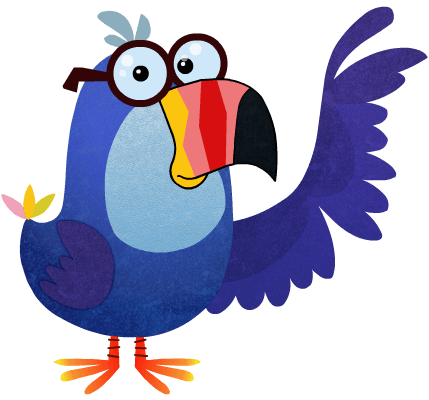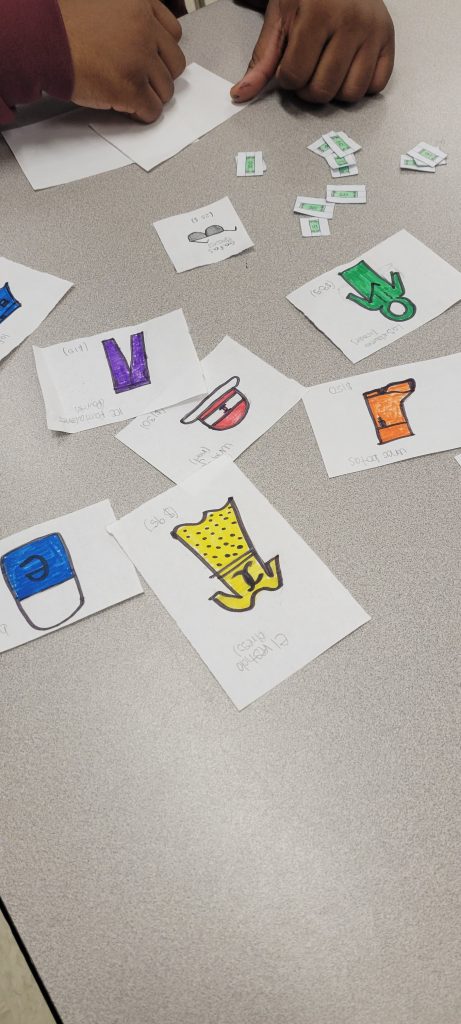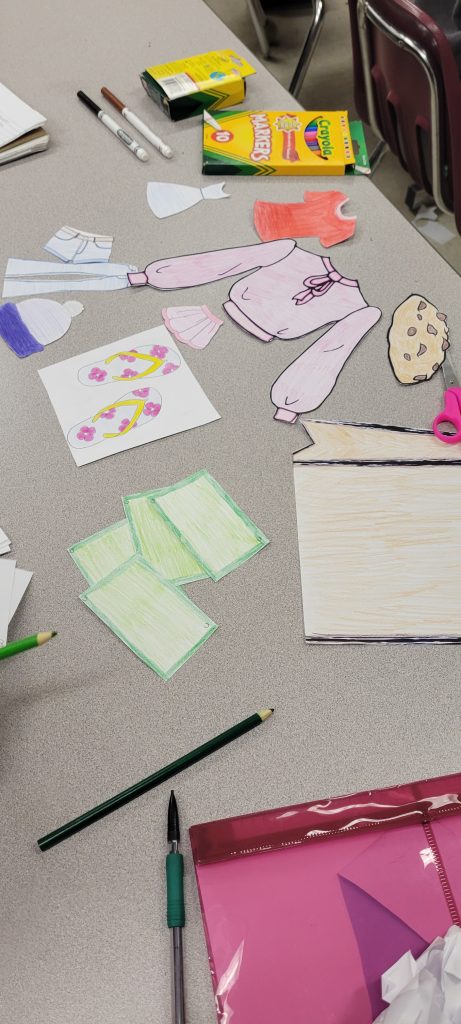Welcome to our blog, where we dive into clothes shopping and learn Spanish! Today, we will explore the exciting realm of sales using the resources from OnlineFreeSpanish.com. Whether you’re a language enthusiast or a student looking to expand your vocabulary, this blog will guide you through mastering Spanish expressions related to shopping, explicitly focusing on questions like “¿Cuánto cuesta?” (How much does it cost?) and “¿Qué vale?” (How much is it worth?).
Exploring Sales Vocabulary:
Before we delve into our project, let’s familiarize ourselves with some essential Spanish expressions related to shopping:
¿Cuánto cuesta? – This question is used to inquire about the price of an item. For example, if you want to ask how much a shirt costs, you’d say: “¿Cuánto cuesta la camisa?”
¿Qué vale? – Similar to “¿Cuánto cuesta?” this phrase is also used to ask about the price or value of something. For instance, if you’re inquiring about the price of a pair of shoes, you’d ask: “¿Qué valen los zapatos?”
Creating a Clothes Shopping Project:
Now, let’s get hands-on with our learning by creating a fun project where you can apply these expressions.
Here’s what you’ll need: you can provide the material to your students
Materials:
- Paper
- Markers/Crayons/Colors
- Scissors
- Glue
- Magazines/catalogs (optional)
Instructions:
- Start by asking your students to sketch out various clothing items, such as shirts, pants, dresses, shoes, hats, etc., on sheets of paper.
- They can get creative with designs! They can think about different patterns, colors, and styles.
- Once they’ve drawn their clothing items, they can label each one with its Spanish name. For example, “camisa” is for shirt, “pantalones” is for pants, “vestido” is for dress, and so on. Students can find all the vocabulary in OnlineFreeSpanish lessons about clothes.
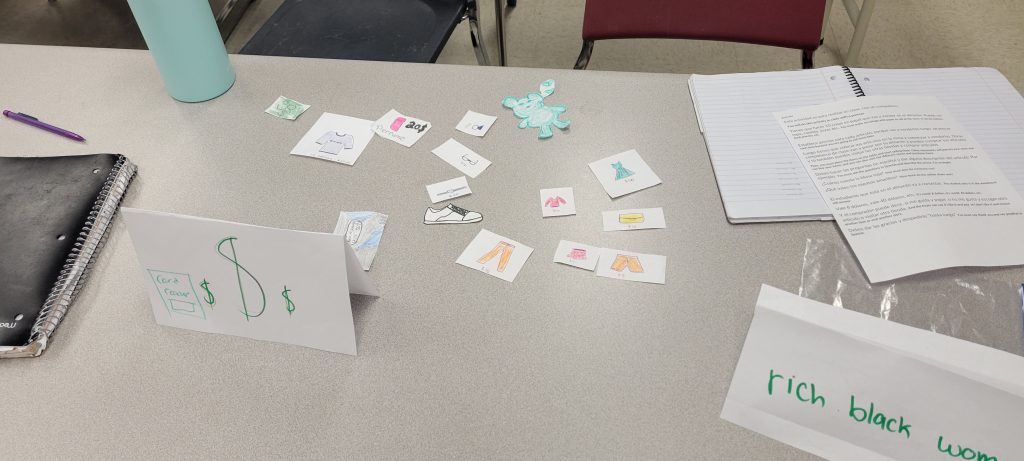
- Underneath each item, they can write its price using the expressions they learned earlier. For instance, “¿Cuánto cuesta?” followed by the price in Spanish. You can make up prices or use real-life examples.
- They can use a separate sheet of paper to create a storefront for your clothing store. You can suggest they have a door, windows, and a sign indicating that it’s a “rebajas” or sales store.
- Then, they can arrange your clothing items neatly in the storefront display. Additionally, they can use glue to stick them onto the paper.
- Now, imagine you’re a customer visiting the store. Practice asking the salesperson (or your fellow students) questions like “¿Cuánto cuesta este vestido?” (How much does this dress cost?) or “¿Qué vale esta camiseta?” (How much is this T-shirt worth?).
- Students can answer: “Cuesta 50 dólares, cuesta 4 dólares“
- Students can practice the numbers with OnlineFreeSpanish here.
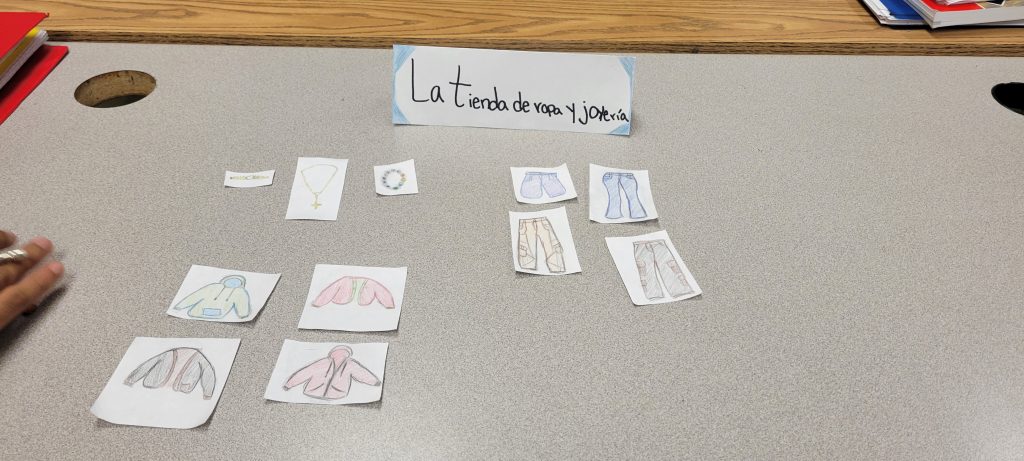
Congratulations! You’ve just completed a fun and interactive project that allows you to unleash your creativity and helps you master essential Spanish vocabulary for shopping.
Remember, learning a new language is all about practice and immersion, so don’t hesitate to keep exploring and experimenting with Spanish in your everyday life. ¡Buena suerte y felices compras! (Good luck and happy shopping!)
Please don’t hesitate to share your thoughts or experiences with this project in the comments below. ¡Hasta la próxima! (Until next time!)
Amigos, we invite you to visit OnlineFreeSpanish; you can access many free resources for your Spanish class.
Hasta pronto amigos,
Claudia,
The team of
OnlineFreeSpanish.com
A Fun Way to Learn Spanish
For kids of all ages.
Facebook: onlinefreespanish
Twitter: freespanish
YouTube: onlinefreespanish
Pinterest: freespanish
